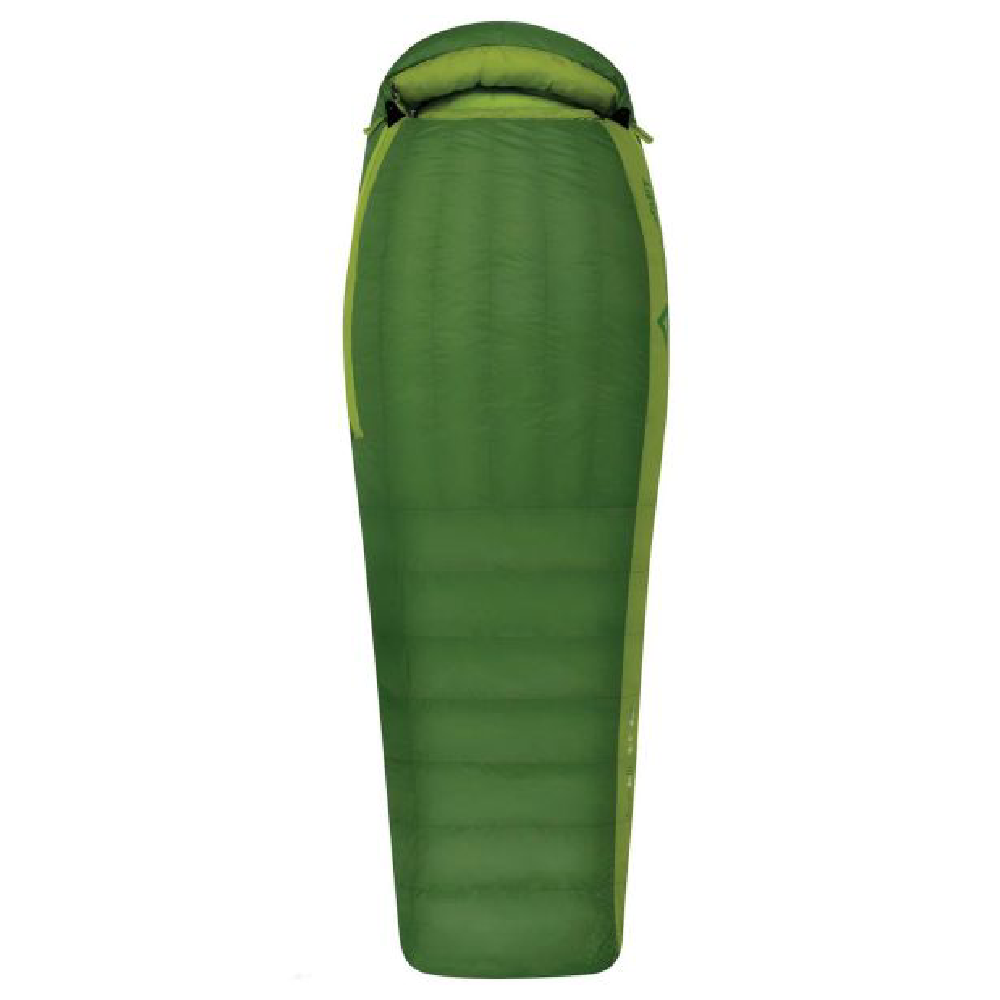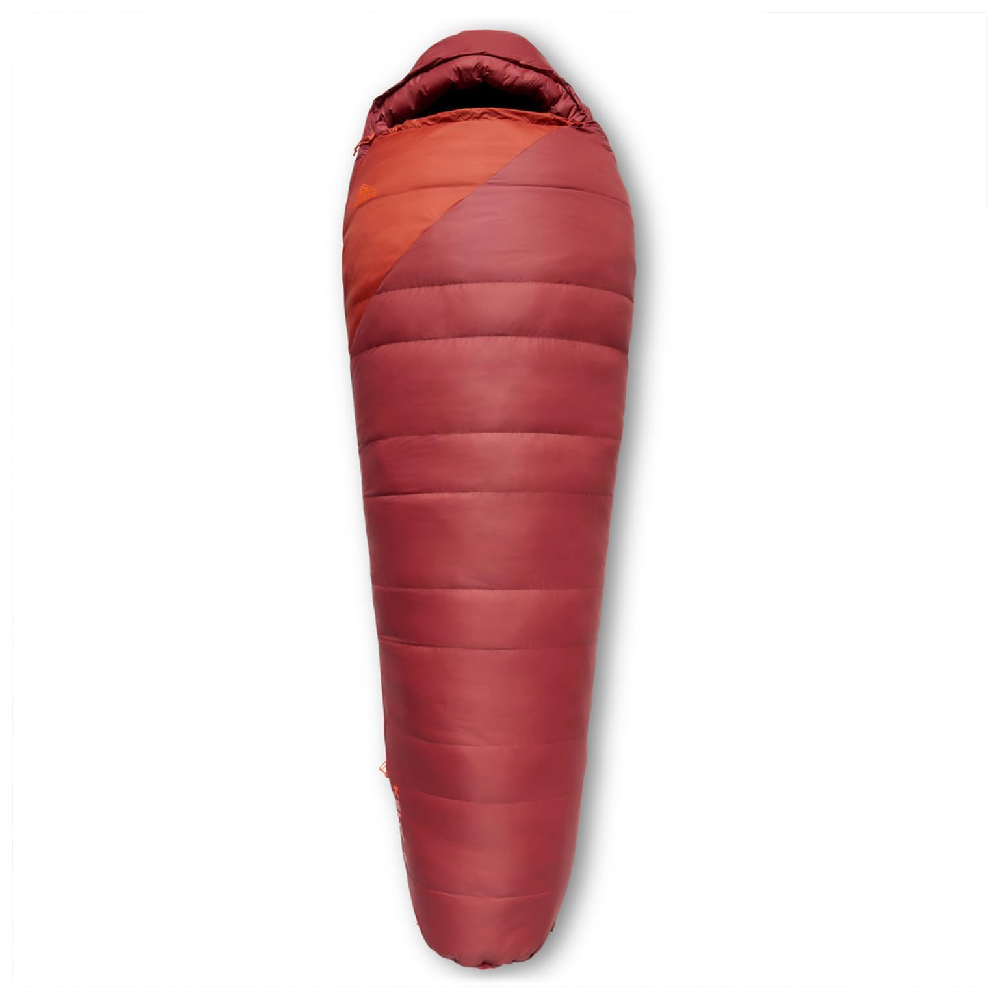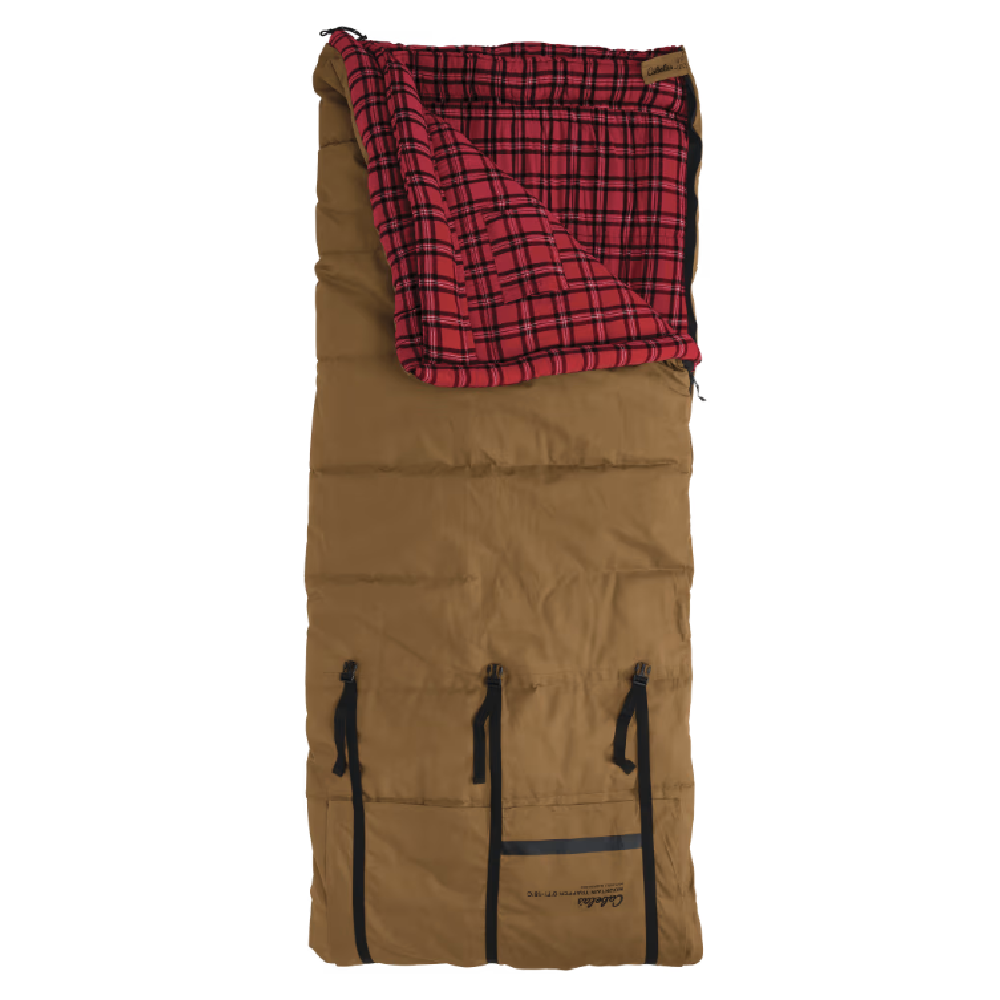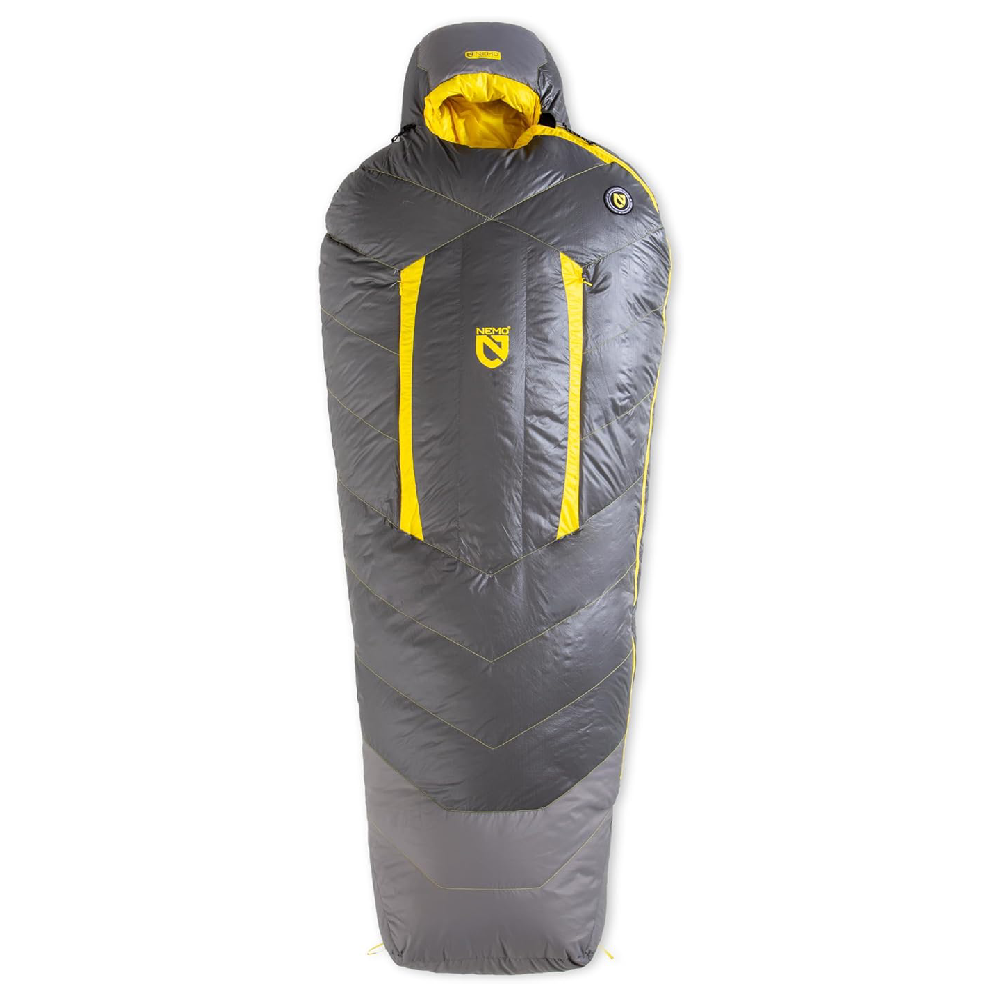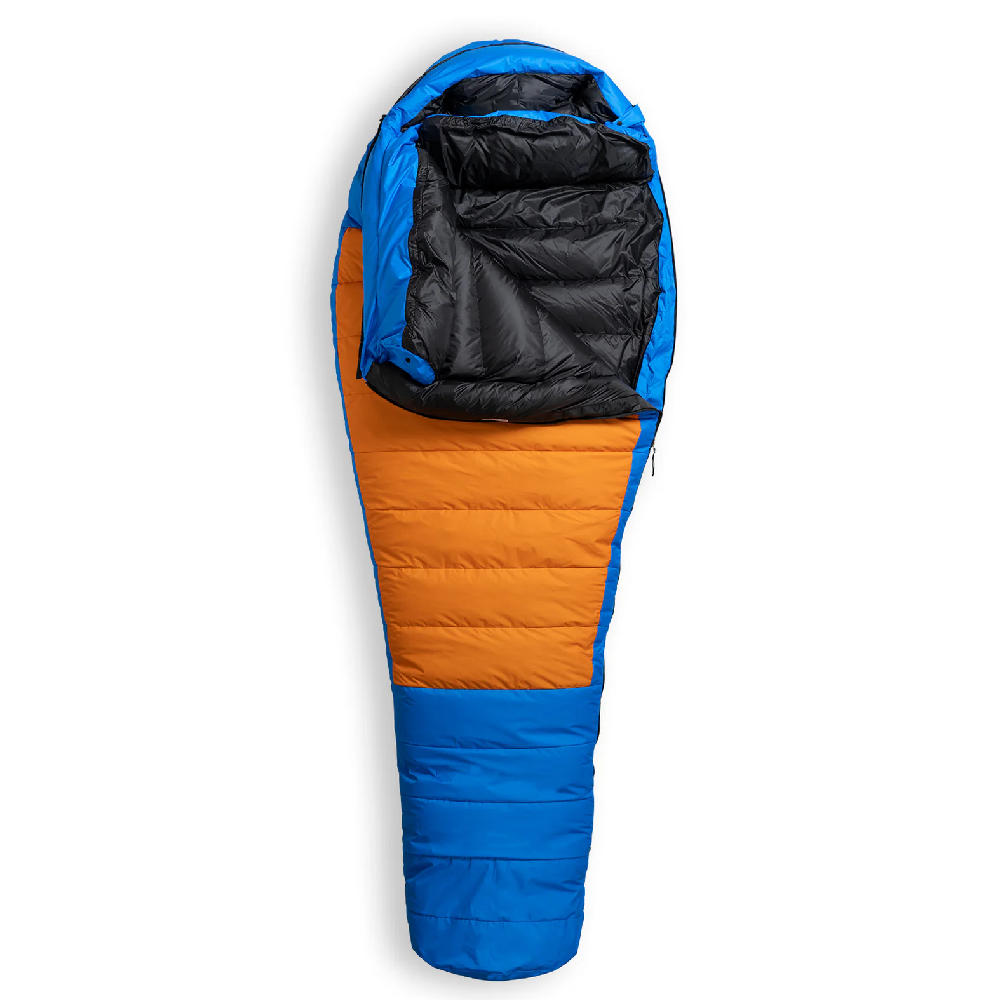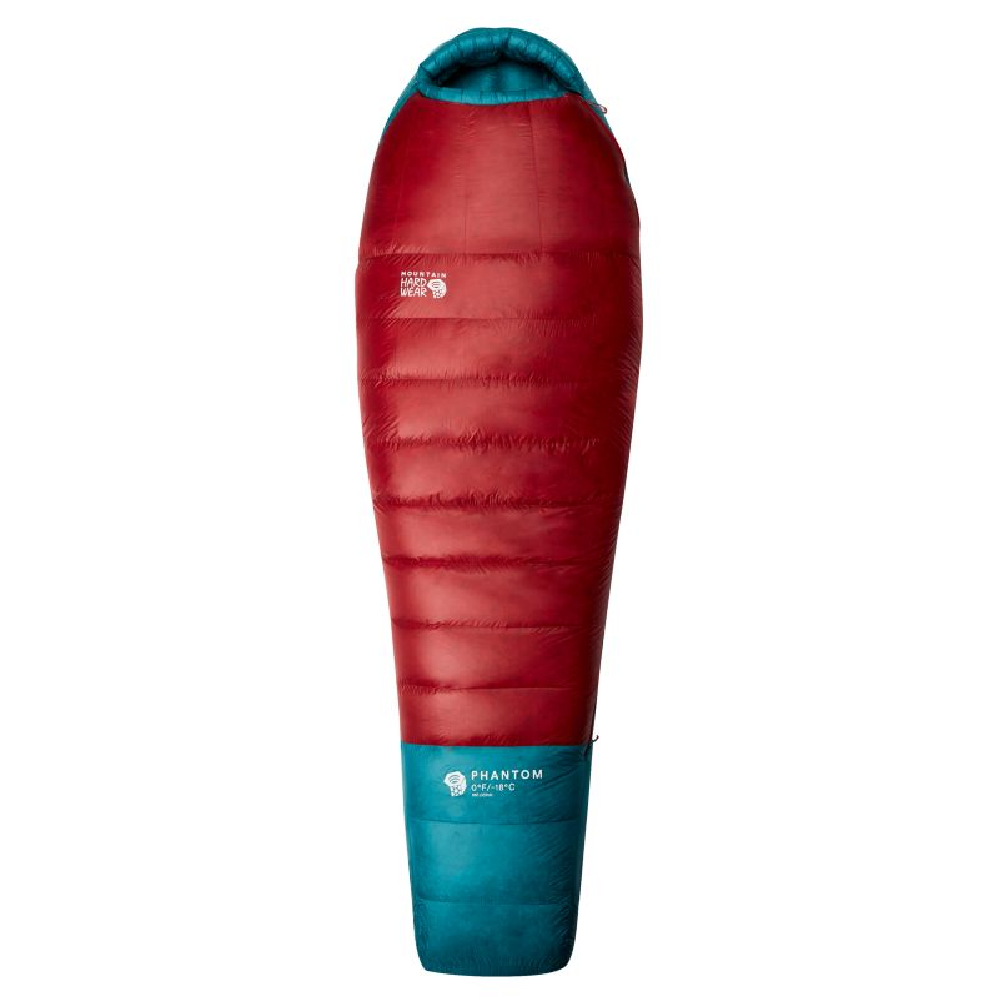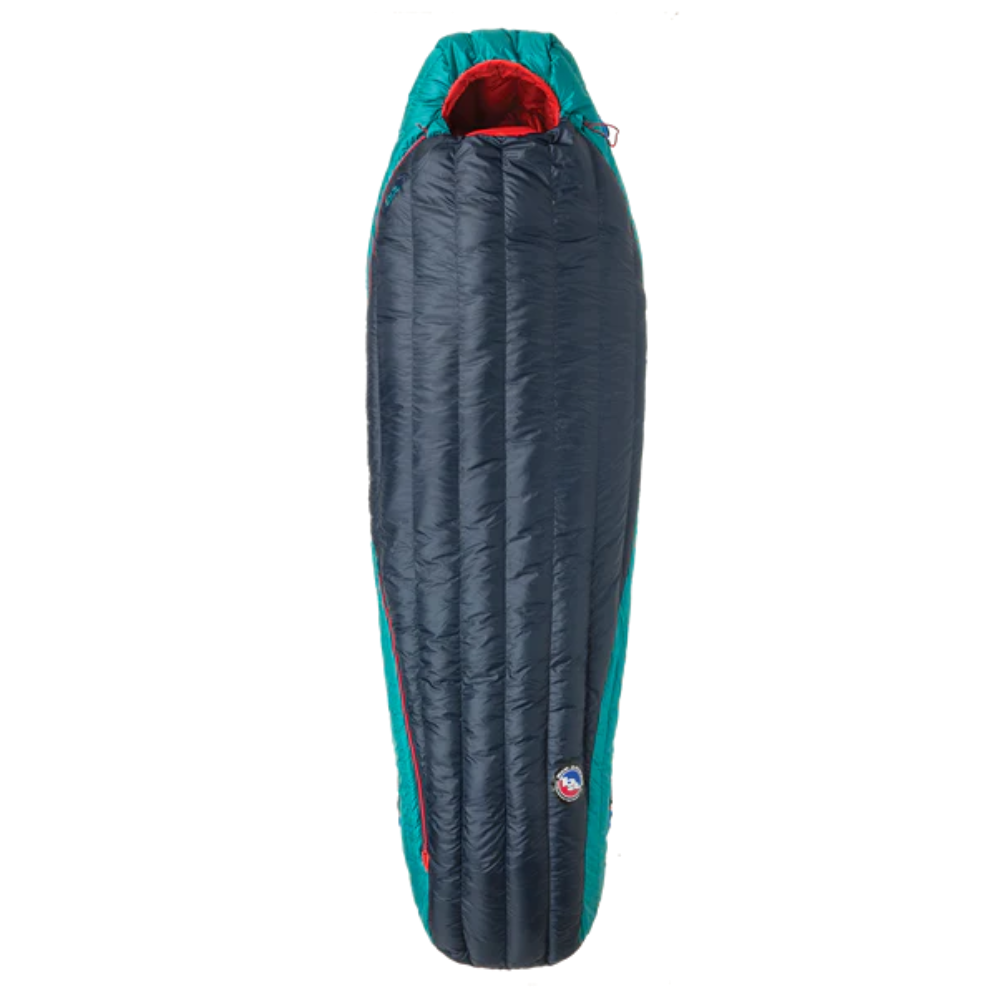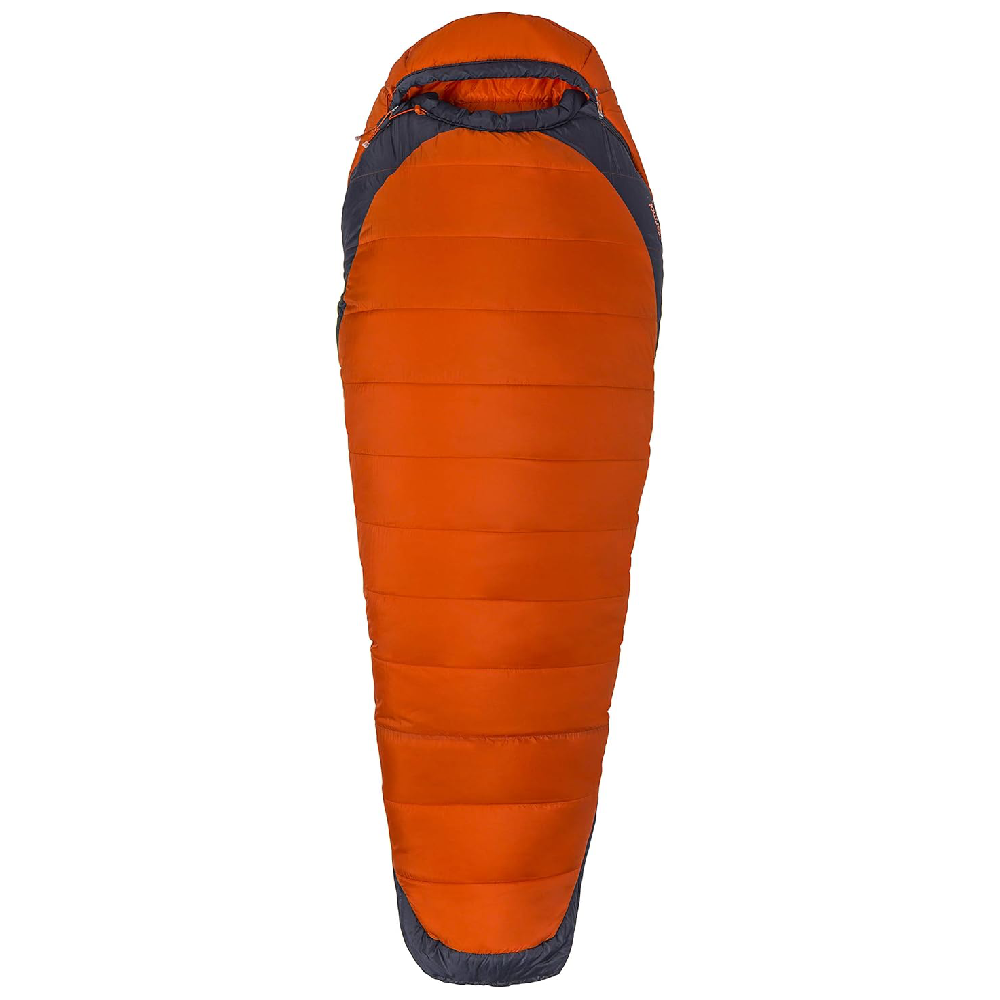We may earn revenue from the products available on this page and participate in affiliate programs. Learn more ›
A good 0-degree sleeping bag is an essential piece of kit if you plan to do any cold-weather adventuring. After all, ensuring a good night’s sleep while you’re out camping is just as important as prioritizing sleep at home. Get eight hours of shiver-free Z’s, and you’ll wake up refreshed and ready to take on whatever your next adventure holds. Spend all night shaking in a meager three-season bag, however, and you’ll end up too groggy to enjoy the trip.
There are a number of decent winter sleeping bags on the market. But if you’re heading out in truly cold temperatures, it pays to do a little extra research to make sure your bag is really as warm and well-built as advertised. To help you decide—and stay comfortable in below-freezing camping conditions—we tested and ranked some of the best 0-degree sleeping bags from brands like Kelty, Nemo, and Big Agnes.
Best Overall: Sea to Summit Ascent Down
Best Down: Kelty Cosmic Down
Best for Backpacking: Nemo Sonic
Best Weather-Resistant: Feathered Friends Snowbunting
Best Lightweight: Mountain Hardwear Phantom
Best for Women: Big Agnes Daisy Mae
Best Synthetic: Marmot Trestles Elite Eco
Best Budget: Cabela’s Mountain Trapper
Best Overall: Sea to Summit Ascent Down
Specs
Weight: 3 lbs, 3 oz. (regular)
Packed Volume: 10.2 liters
Lengths: Regular, long
Fill Power: 750-fill down
Pros
Footbox zipper and dual side zips for easy venting
Relaxed fit ideal for restless sleepers
Inner zip pocket for electronics
Fully unzips for use as a quilt
Soft, cozy inner lining
Cons
Zippers can be a bit fiddly
Not only is this Sea to Summit sleeping bag versatile and packable, it also immediately stood out for its best-in-class comfort. The buttery-soft lining felt better against my skin than my own bedsheets, and the relaxed mummy fit kept me warm without feeling constrictive. Even the most restless sleepers among our testers were able to flop around and change positions without feeling bound up in the bag. Separate vertical chest baffles keep the insulation over your core when you need it, and a generous neck baffle keeps heat sealed in tight.
But comfort isn’t the whole story. The Ascent Down 0 is a full-featured sleeping bag across the board. For starters, it has three zippers: one at the base of the footbox, a full-length side zipper along the left side, and a blanket fold quarter zipper on the right side. The footbox and blanket fold zippers make it easy to stick out a foot or an arm on hot nights, and the whole bag flays open entirely, becoming a backpacking quilt for summer trips.

But even with the three zippers, this bag stays right around the 3-pound mark, thanks to its lightweight, high quality materials. The 750-fill down guarantees warmth without adding too much bulk, and a lightweight, 20-denier nylon shell makes for easy packing. Better yet: All this comes at a reasonable price.
Best Down: Kelty Cosmic Down
Specs
Weight: 4 lbs, 5 oz. (regular)
Packed Volume: 24L
Lengths: Regular, long
Fill Power: 550-fill
Pros
Two-way zipper for easy venting
Comfortable inner lining
Internal valuables pocket
More affordable than many similar models
Cons
Heavier than similar models
Not very packable
The Kelty Cosmic Down 0 provides a great balance of comfort and price. At under $300, it’s one of the most affordable sleeping bags on this list—rare for down. A continuous draft tube keeps the cold from seeping through the zipper, and trapezoid-shaped baffles trap the 550-fill down insulation in place, preventing migration over time.
We also appreciated the features—an internal zippered stash pocket, a hood cinch, a neck baffle, and a two-way zipper for venting heat on hot nights. While not as soft against my skin as some of the other bags on this list, the durable materials promise a lifetime of use.

One caveat: this bag has a 17-degree EN comfort rating. That means it’s slightly less warm than most other models on this list, which have 13- to 15-degree comfort ratings. At over 4 pounds, the Cosmic is also a little heavy.
Best for Backpacking: Nemo Sonic
Specs
Weight: 3 lbs, 4 oz. (regular)
Packed Volume: 9.6 liters
Lengths: Short, regular, long
Fill Power: 800-fill
Pros
Light weight that’s ideal for backpacking trips
Chest zippers help vent some heat
Reinforced footbox to boost durability
External valuables pocket
Anti-snag zipper sliders
Cons
Pricier than similar models
The Nemo Sonic 0 strikes a perfect balance between weight, warmth, and packability, making it a perfect choice for a backpacking sleeping bag. High quality, dry-treated, 800-fill down is packed into chevron-shaped baffles, which keep it firmly in place. As a result, the insulation evenly wraps the body, preventing cold spots. The soft inner lighter felt smooth against my skin, and the mummy fit was just right—not too tight to keep me from turning around in my sleep, but not so baggy as to leave me with excess space to heat.
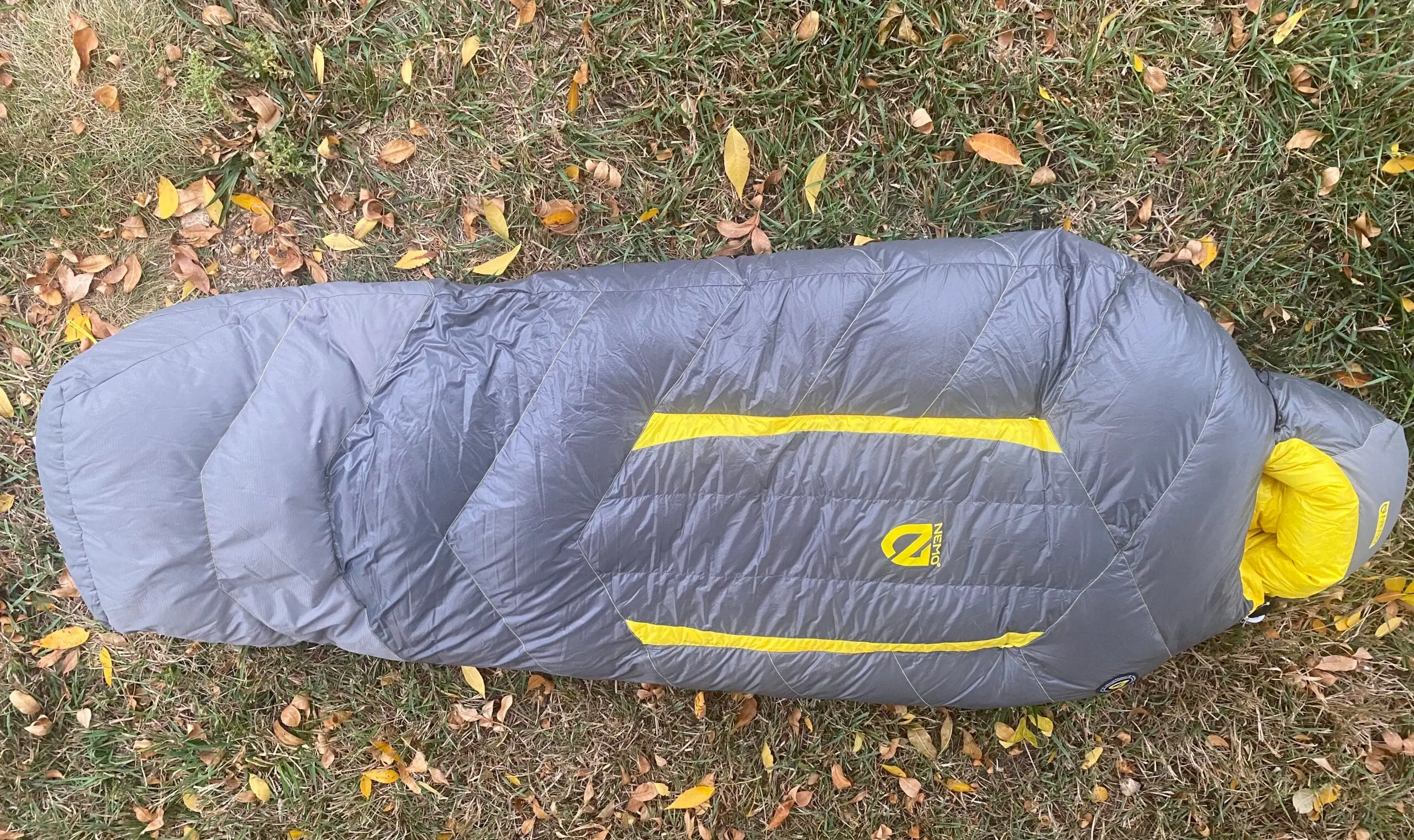
As an added nice touch, the footbox is reinforced with an extra layer of synthetic insulation and a waterproof shell. The design provides extra warmth for cold toes and repels moisture from wet tent walls.
Best Weather-Resistant: Feathered Friends Snowbunting
Specs
Weight: 3 lbs, 4 oz.
Packed Volume: 17 liters
Lengths: Regular
Fill Power: 800-fill down
Pros
Water-resistant shell
Durable outer material
Smooth zipper action
Higher-quality down than other bags in the test
Cons
Difficult to compress
Crinkly outer material
No valuables pocket
The most expensive bag in the test
The most expedition-ready sleeping bag on our list, the Feathered Friends Snowbunting Ex defied both moisture and abrasion during initial testing. Credit goes to the outer shell, a tough, water-resistant, 15-denier ripstop Pertex Shield fabric. The neck baffle is also covered in water-resistant material. This kept condensation from our exhales out of the main bag, preserving loft and therefore warmth. Made of high-quality and responsibly sourced materials—including 800-fill down—this bag kept us warm even on the chilliest nights.
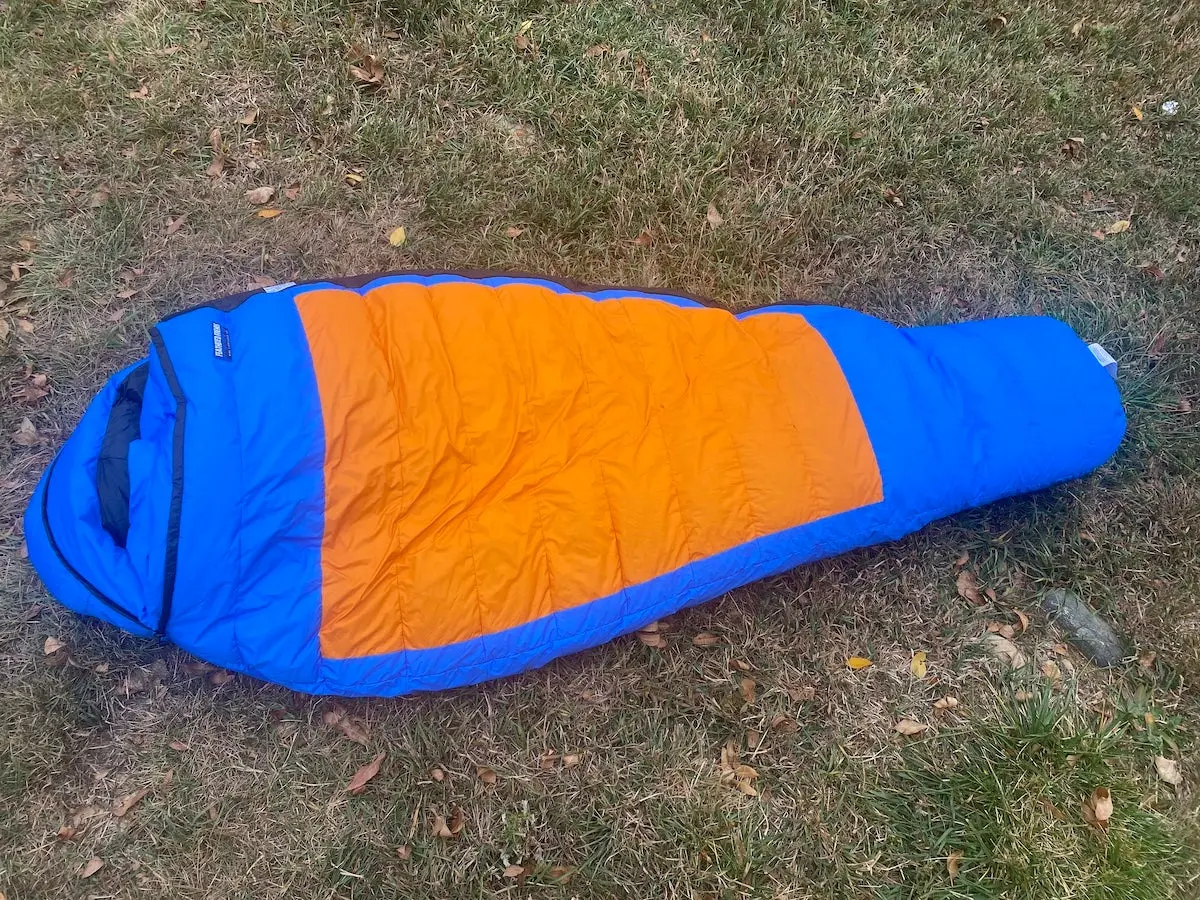
We appreciated the cozy draft collar and thick draft tube, which kept cold air from sneaking in through the neck or side zipper. The only big downside to this bag (aside from the premium price) is its packability. The rugged outer material takes some serious effort to wrangle into its 17-liter stuff sack.
Best Lightweight: Mountain Hardwear Phantom
Specs
Weight: 2 lbs, 11 oz. (regular)
Packed Volume: 9.7 liters
Lengths: Short, regular, long
Fill Power: 850-fill
Pros
Lightweight and easy to pack
Extremely efficient performance-mummy cut
Two-way zipper for easy venting
Glow-in-the-dark zipper pull is easy to find at night
Cons
Tight fit and narrow footbox may feel claustrophobic to some sleepers
Limited features and no stash pocket
If you’re tackling big miles and trying to keep an eye on your pack weight, look no further than the Mountain Hardwear Phantom 0. This svelte, no-frills bag has been a mainstay within the backpacking community for years. It’s not hard to see why: the insulation is a premium 850-fill goose down packed into a 10-denier nylon ripstop outer shell. These are highly packable, high-quality materials that compress easily into a stuff sack that’s just under 10 liters. That makes the Phantom 0 much more compact than many backpacking bags of equal warmth.
A thick draft collar keeps warm air trapped around the body, and a two-way zipper makes it easy to free a leg on warmer evenings.
Best for Women: Big Agnes Daisy Mae
Specs
Weight: 2 lbs, 14 oz. (petite)
Packed Volume: 21L
Lengths: Petite, regular
Fill Power: 650-fill
Pros
Fairly lightweight for a bag this warm
High-quality insulation
Relaxed cut ideal for wider hips
Features a sleeping pad sleeve and pillow sleeve
Cons
Not as packable as other models
Women’s 0-degree sleeping bags can be hard to find. To qualify as women’s bags, they have to feature not only a roomier cut and shorter length, but also more insulation as women tend to sleep colder than men. But the Big Agnes Daisy Mae 0 checks all those boxes—and manages to come in at a reasonable price point. The relatively low weight and price come from a unique design. Unlike other sleeping bags, which are fully covered in insulation baffles, this bag has no insulation between your back and your sleeping pad (compressed down provides minimal warmth, anyway). The backless design saves weight, giving this bag a great warmth to weight ratio.
That said, you will need a well-insulated sleeping pad for it to work effectively. We also loved the Daisy Mae’s features: a sleeve in the hood keeps pillows in place, and elasticized bands are designed to wrap around a sleeping pad, keeping you from rolling off in the middle of the night. The only downside we could find is that the Daisy Mae’s generous insulation means it’s pretty bulky—not ideal for a compact backpacking setup
Best Synthetic: Marmot Trestles Elite Eco
Specs
Weight: 3 lbs, 8 oz. (regular)
Packed Volume: 21L
Lengths: Regular
Fill Power: N/A (synthetic fill)
Pros
Very reasonable price point
Internal valuables pocket
Blanket-fold secondary zipper
Made of recycled materials
Cons
Narrow footbox can feel restrictive
If you need a warm sleeping bag—but don’t want to pay top dollar for down—the Marmot Trestles Elite Eco is a great option. By using entirely synthetic materials, this bag manages to keep costs low without adding too much extra weight. The mummy shape also eliminates excess material—though restless sleepers may find the narrow footbox a bit constricting.
A full side-length zipper, a secondary blanket-fold zipper, an external valuables pocket, and a hood cinch round out the features. We also love that this bag is relatively compressible for a synthetic; its unique blend of insulation fibers and 20-denier recycled polyester fabric make it easy to stuff into its included compression sack.
Best Budget: Cabela’s Mountain Trapper
Specs
Weight: 10 lbs.
Packed Volume: 30L
Lengths: Long
Fill Power: N/A (synthetic fill)
Pros
Soft flannel and cotton fabrics
Roomy, rectangular cut
Extremely affordable price point
Internal valuables pocket
Cons
Cotton and flannel fabrics offer poor water resistance
Bulky and difficult to compress
Heavier than any other bag we tested
Unlike most of the bags on this list, the Cabela’s Mountain Trapper 0 is designed to feel just like your bed at home. The rectangular cut leaves plenty of room to roll around at night, and the soft flannel lining feels familiar next to your skin. But the best part of this bag is its low price. At well under $200, it’s at least one-third the cost of many of the bags we tested. The savings come from using less-technical and lower-quality materials. The bag’s shell is cotton canvas coated with a water-repellent finish, and the interior of the bag is a soft flannel. While these fabrics feel cozy, they tend to absorb moisture, especially once the water-repellent finish has rubbed off.
Likewise, the insulation is warm but not very compressible; this bag rolls up but doesn’t squish down small enough to fit into a standard backpacking pack. Still, the Mountain Trapper is a great entry-level bag for car campers looking for something that’s simple, comfortable, and warm.
How We Tested 0-Degree Sleeping Bags
Sleeping bags come in a wide variety of cuts and styles, and each takes a different approach to backcountry warmth. Even subtle variations in baffle pattern, materials, insulation, and construction can make a big difference in a bag’s ability to retain its loft—and therefore heat—year after year.
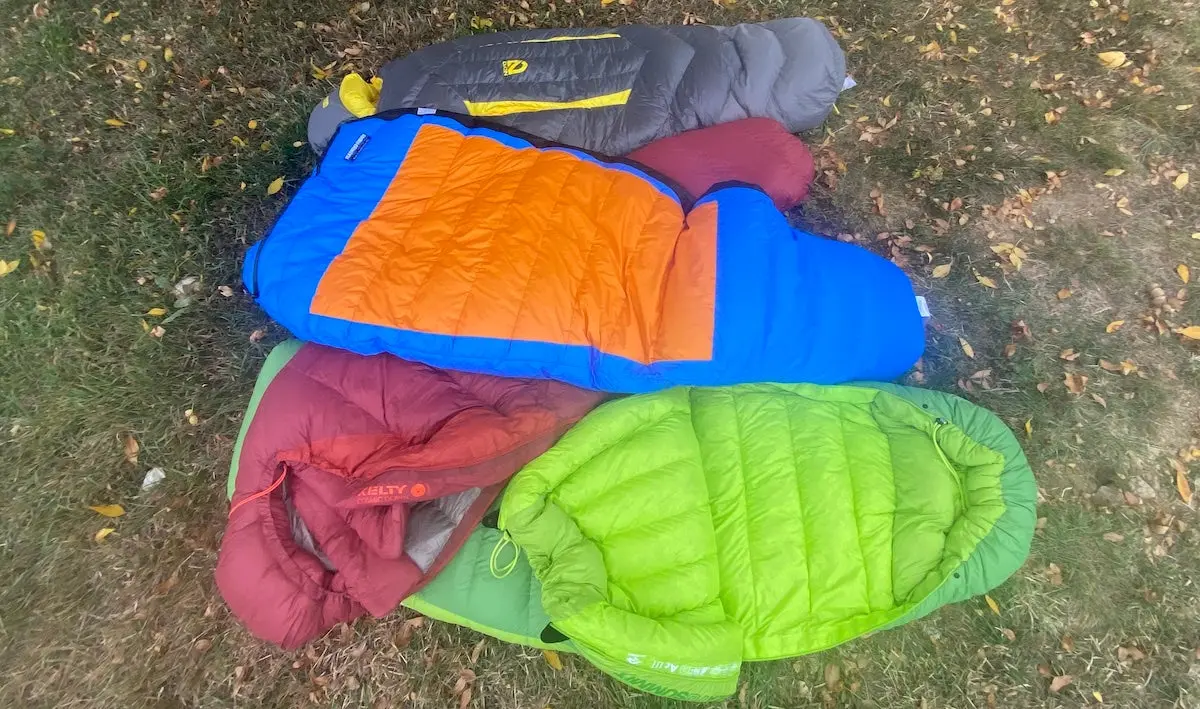
To determine the best 0-degree sleeping bags you can buy, we considered 12 bags from 10 top outdoor gear companies. We took the sleeping bags on various camping trips, carefully considering warmth, weight, packability, cut, and features. These nine emerged as our favorites.
What To Look for in a 0-Degree Sleeping Bag
Insulation
There are two main types of sleeping bag insulation: down, and synthetic. Down sleeping bags—usually stuffed with goose or duck down—tend to be lighter-weight and more packable. However, if down gets wet, it will lose all its loft, which means it won’t keep you warm.
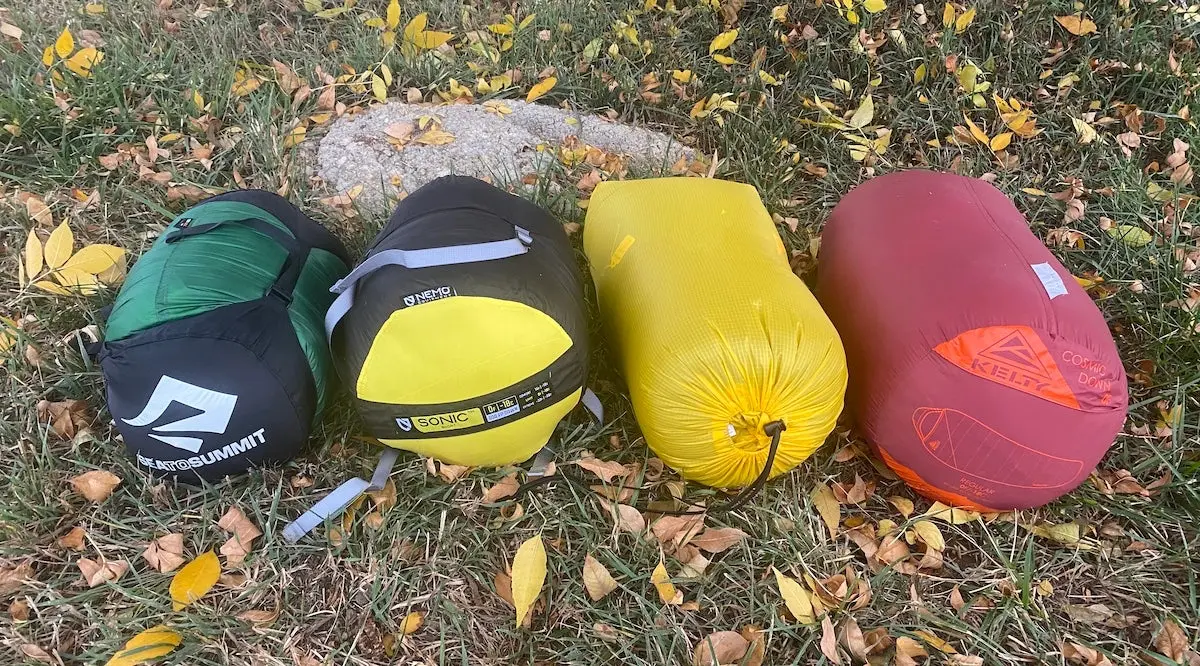
Synthetic sleeping bags, on the other hand, retain warmth even when wet. However, they tend to be heavier and bulkier. In addition to being much more packable than synthetic insulation, down also tends to be more durable; that is, it retains its loft longer. Synthetic insulation, on the other hand, can get permanently compressed over time if it’s left in its stuff-sack for too long.
Warmth
Contrary to what the hang tags may indicate, not all “0-degree” sleeping bags are equally warm. Often, the temperature listed on the bag’s label doesn’t exactly correspond to its temperature rating. Sometimes, that hang-tag temperature is simply a measure of its “EN Limit Rating”—the lowest temperature at which the bag will keep you alive.
The true measure of a bag’s warmth, however, is its “EN Comfort Rating.” This is the temperature rating at which the bag will be cozy enough to sleep soundly in. In fact, most of the bags on this list have EN Comfort Ratings of around 15°F. That means they only truly function as 0-degree bags for warm sleepers.
Keep in mind that women tend to sleep colder than men, so women’s bags tend to be about 10 to 15°F warmer than men’s bags for the same labeled temperature. If you know you sleep cold and plan to encounter nighttime temperatures of around 0°F, you’ll likely need to look at bags with temperature ratings of 0°F for comfort. These bags might be labeled as -10-degree bags or -15-degree bags.
In contrast, if the lowest temperature you expect to encounter is higher than about 15°F, you may want to shop three-season sleeping bags instead. Also keep in mind that your sleeping bag will only keep you warm in cold temperatures if you have an insulated sleeping pad to go with it. Your sleeping bag insulates you from the air around you, but your sleeping pad insulates you from the ground. Look for closed-cell foam pads or inflatable pads with a high R-value, the standard metric for insulative power.
Features
Different cuts and features can make for a very different sleeping experience. Mummy bags tend to be lightweight and warmer since they leave you with less space to heat. However, some folks find them claustrophobic. Bags with a rectangular cut and extra zippers tend to be heavier, but they make it easier to stick out a foot if you get too hot, or roll around and get cozy. Other great features: a cinch cord around the hood, a fluffy baffle to seal in heat around your neck, and a valuables pocket to stash items like a phone or headlamp so that the batteries don’t die in the cold at night .
Fill Power
Fill power is essentially a measure of the quality of the down in a down sleeping bag. If the bag has 800-fill down, 900-fill down, or higher, it’s probably going to be pretty lightweight and packable—and yet still pretty warm. Down that’s 600-fill or under is likely to be bulkier, albeit much less expensive.
FAQs
Q: What is the most comfortable material for a sleeping bag?
To gauge a sleeping bag’s next-to-skin comfort, look at the material of its inner lining. Some car-camping bags have cotton or flannel linings, which can feel pretty similar to your sheets at home. However, most performance sleeping bags have polyester or nylon linings. A lower-denier fabric—like a 10-denier or 20-denier nylon—will generally feel thinner and therefore less crinkly against your skin. Look for a “brushed” lining fabric if you want an extra snuggly feel. Taffeta liners, in contrast, tend to feel more smooth and satiny, which some sleepers prefer.
Q: Is it better to sleep with less clothes in a sleeping bag?
Contrary to the old wive’s tale, sleeping naked in a sleeping bag will not keep you warmer. In addition, skin oils, sunscreen, and bug spray can all get into your sleeping bag’s insulation, which can cause it to clump together or wilt, making it less warm over time. It’s best to sleep with a thin base layer on both your top and bottom. You want something that’s full-coverage and wicking but that isn’t so warm it will make you sweat.
Final Thoughts
The best sleeping bags balance warmth and comfort with weight and packability. They’re made of soft, durable materials, and they have all the right zippers and baffles you need to seal in heat when you need it—or vent it out when you don’t. If you’re on the hunt for the perfect sleeping bag, any of the ones we tested above will do.
Why Trust Us
For more than 125 years, Field & Stream has been providing readers with honest and authentic coverage of outdoor gear. Our writers and editors eat, sleep, and breathe the outdoors, and that passion comes through in our product reviews. You can count on F&S to keep you up to date on the best new gear. And when we write about a product—whether it’s a bass lure or a backpack—we cover the good and the bad, so you know exactly what to expect before you decide to make a purchase.


